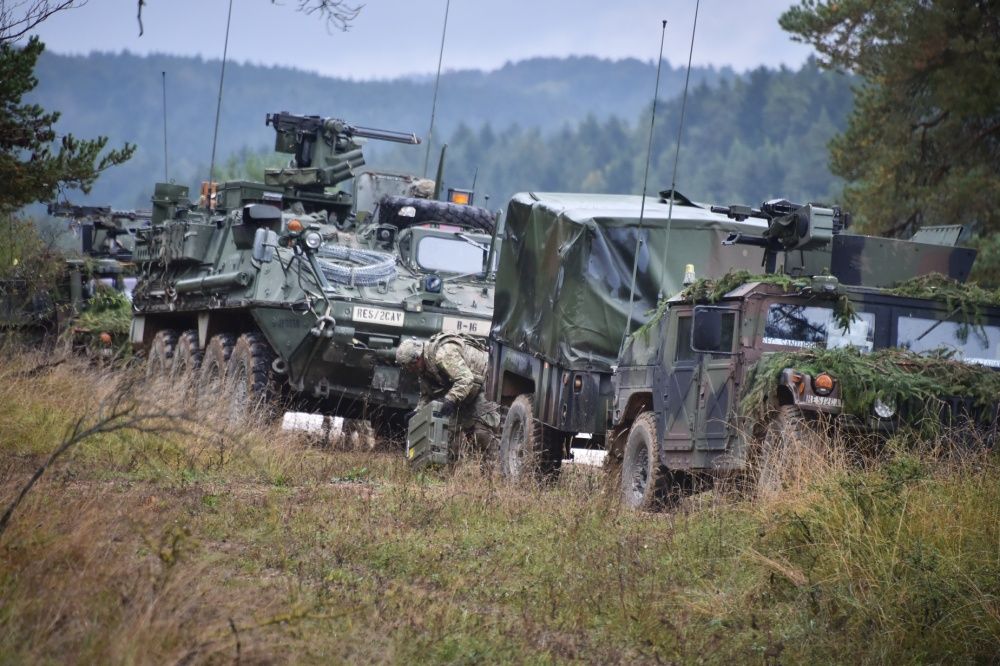Rotational forces, including heavy armored and aviation brigades, in addition to the storage of massive amounts of equipment at strategic sites, will be a big emphasis next year to help America and its European allies keep Russia at bay, according to the general who oversees the U.S. Army’s mission in Europe.
“This is all about deterrence,” said Lt. Gen. Ben Hodges, commander of U.S Army Europe, during the Association of U.S. Army’s annual meeting and exposition, Oct. 3.
“To deter, you have to have real capability and demonstrate the will to use that capability,” he said. “And part of that will is demonstrated by the money that the Army is spending and bringing over rotational forces to help us do our job.”
With signals of a recent shift in strategy from assurance to deterrence to stem Russian aggression, the Army plans to send the 3rd Armored Brigade Combat Team, 4th Infantry Division, to Europe in mid-January for a nine-month rotation, while the 10th Mountain Division’s Combat Aviation Brigade is also expected to head over in March to bolster the Army’s presence.
The administration has proposed to fund the European Reassurance Initiative $3.4 billion in fiscal year 2017, most of which will be earmarked for Army operations to reassure allies.
“If you don’t have budget certainty, it makes it very difficult to plan and participate,” Hodges said.
Preparing for the worst, the Army will also look into stockpiling static equipment in Germany, Netherlands and Belgium over the next three-plus years to have a contingency to equip Soldiers responding to a crisis.
“It’s going to go into storage,” Hodges said of the equipment, being left by other rotational units. “We’re going to have all that equipment stored in those places.”
Due to the outcome of July’s NATO summit in Warsaw, Poland, the Army will also have an enhanced forward presence as part of a multinational effort to strengthen the defenses of Estonia, Latvia, Lithuania and Poland. About 800 cavalrymen from 2nd Squadron, 2nd Cavalry Regiment, out of Vilseck, Germany, will move into northeast Poland early next year for six months before being replaced by the regiment’s 3rd Squadron for another six-month rotation, according to the general.
“All of those forces are intended to be able to slow down or stop a potential (Russian) incursion,” Hodges said.
All of the moving pieces, said Hodges, along with support from allies expected next year, will bring a holistic approach to curbing Russian aggression, which has already crossed boundaries with armed invasions of Ukraine, Crimea and Georgia. Setting up rapid capabilities for the Army may prevent more of these conflicts in the future, he said.
“Russia isn’t going to allow us to have a bunch of tanks on the border,” Hodges said. “How fast can we move forces somewhere to preempt a crisis from happening and to demonstrate that we are prepared?
“We’re working hard to re-establish the necessary level of capability to ensure deterrence,” he continued. “We haven’t lost it, but we are having to rebuild some of that to make it more relevant.”
With only about 30,000 Soldiers in Europe to counter Russia’s actions today compared to roughly 300,000 against the Soviet Union in the Cold War days, Hodges said that the additions next year will allow his region to be more prepared.
“That’s how we make 30,000 look like 300,000,” he said. “We are an economy of force, but the Army is going to spend a ton of money helping us get that capability back over in Europe.”










